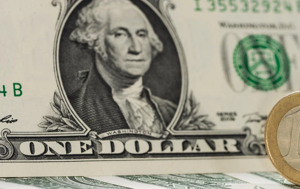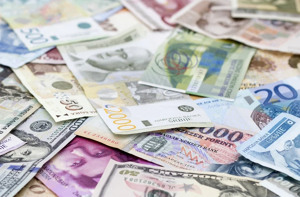Tavex uses cookies to ensure website functionality and improve your user experience. Collecting data from cookies helps us provide the best experience for you, keeps your account secure and allows us to personalise advert content. You can find out more in our cookie policy.
Please select what cookies you allow us to use
Cookies are small files of letters and digits downloaded and saved on your computer or another device (for instance, a mobile phone, a tablet) and saved in your browser while you visit a website. They can be used to track the pages you visit on the website, save the information you enter or remember your preferences such as language settings as long as you’re browsing the website.
| Cookie name | Cookie description | Cookie duration |
|---|---|---|
| tavex_cookie_consent | Stores cookie consent options selected | 60 weeks |
| tavex_customer | Tavex customer ID | 30 days |
| wp-wpml_current_language | Stores selected language | 1 day |
| AWSALB | AWS ALB sticky session cookie | 6 days |
| AWSALBCORS | AWS ALB sticky session cookie | 6 days |
| NO_CACHE | Used to disable page caching | 1 day |
| PHPSESSID | Identifier for PHP session | Session |
| latest_news | Helps to keep notifications relevant by storing the latest news shown | 29 days |
| latest_news_flash | Helps to keep notifications relevant by storing the latest news shown | 29 days |
| tavex_recently_viewed_products | List of recently viewed products | 1 day |
| tavex_compare_amount | Number of items in product comparison view | 1 day |
| Cookie name | Cookie description | Cookie duration |
|---|---|---|
| chart-widget-tab-*-*-* | Remembers last chart options (i.e currency, time period, etc) | 29 days |
| archive_layout | Stores selected product layout on category pages | 1 day |
| Cookie name | Cookie description | Cookie duration |
|---|---|---|
| cartstack.com-* | Used for tracking abandoned shopping carts | 1 year |
| _omappvp | Used by OptinMonster for determining new vs. returning visitors. Expires in 11 years | 11 years |
| _omappvs | Used by OptinMonster for determining when a new visitor becomes a returning visitor | Session |
| om* | Used by OptinMonster to track interactions with campaigns | Persistent |
| Cookie name | Cookie description | Cookie duration |
|---|---|---|
| _ga | Used to distinguish users | 2 years |
| _gid | Used to distinguish users | 24 hours |
| _ga_* | Used to persist session state | 2 years |
| _gac_* | Contains campaign related information | 90 days |
| _gat_gtag_* | Used to throttle request rate | 1 minute |
| _fbc | Facebook advertisement cookie | 2 years |
| _fbp | Facebook cookie for distinguishing unique users | 2 years |
What Are Currency Pairs and How Do You Trade Them?

The foreign exchange (Forex or FX) market is the largest and most liquid financial market in the world. Every day, more than $7 trillion worth of currencies is exchanged, exceeding the total value of all physical US dollars in circulation.
At the heart of this market are currency pairs, which represent the value of one currency relative to another. In this article, we’ll explain what currency pairs are, how to interpret them, and how you can trade them effectively.
Understanding Currency Pairs: Base vs. Quote

A currency pair consists of two currencies: the base currency and the quote currency. The pair expresses how much of the quote currency is needed to buy one unit of the base currency.
Take EUR/USD as an example. Here, the euro (EUR) is the base currency, and the US dollar (USD) is the quote currency.
If the pair is trading at 1.12, it means 1 euro is worth 1.12 US dollars
In most cases, the base currency is the stronger of the two, but there are exceptions. For instance, in USD/CHF, the Swiss franc is actually stronger, but the US dollar is listed first due to long-standing market conventions.
Reading Currency Pair Quotes: Bid, Ask, and Spread
When trading currency pairs, you’ll encounter two prices:
- Bid: The price a broker or exchange will pay to buy the base currency from you.
- Ask: The price at which the broker will sell you the base currency.
The spread is the difference between the bid and ask prices. This is how brokers and dealers make a profit. For example, if you’re exchanging euros for dollars, you’ll receive the bid price. If you’re buying euros with dollars, you’ll pay the ask price.
Read more on the topic here: The basics: what is spot, bid & ask, spread and premium?
How Currency Pairs Work in the Forex Market

The Forex market facilitates global trade, investment, travel, and much more. Whether it’s a business expanding operations internationally or a traveller converting money at a border, currency exchange is essential.
The system works because of mutual trust: we accept foreign currencies knowing they can be exchanged back
But when that trust erodes – due to inflation, war, or political instability – a currency can rapidly lose value. The Turkish lira, for example, has lost over 80% of its value against the US dollar since 2021.
Types of Currency Pairs: Major, Minor, and Exotic
Currency pairs fall into three main categories:
1. Major Currency Pairs
These are the most liquid and heavily traded pairs in the world. They all include the US dollar and offer tight spreads:
- EUR/USD
- USD/JPY
- GBP/USD
- USD/CHF
- AUD/USD
- USD/CAD
- NZD/USD
2. Minor Currency Pairs (Crosses)
These don’t involve the US dollar but include other major currencies, such as:
- EUR/GBP
- EUR/CHF
- GBP/CHF
- AUD/JPY
3. Exotic Currency Pairs
These involve a major currency paired with the currency of an emerging or smaller economy:
- EUR/TRY
- USD/MXN
- USD/SGD
- USD/SEK
What Influences Currency Pair Prices?

Currency values are constantly fluctuating due to supply and demand. These changes are driven by several key factors:
Economic Factors
- Interest rates: Higher interest rates typically strengthen a currency, as they attract investors seeking higher returns.
- Central bank interventions: Currency pegs or active devaluations, such as in Argentina or Romania, can influence exchange rates.
- Fiscal policy: Excessive government spending can lead to inflation, reducing investor confidence and weakening the currency.
Political Factors
- Nationalisation of industries, political instability, or erosion of property rights can cause foreign investors to pull out, weakening the currency.
Geopolitical Factors
- War, sanctions, or deteriorating international relations can drastically undermine a currency’s value, as seen with the Ukrainian hryvnia and Israeli shekel during recent conflicts.
How to Trade Currency Pairs
Once you understand how currency pairs work and what drives their movements, you can consider trading them for profit. Here are some popular strategies:
1. Scalping
A rapid-fire strategy where trades last just seconds or minutes. Traders aim to “scalp” small profits multiple times a day.
2. Day Trading
Positions are opened and closed within the same trading day. This strategy suits those who want short-term profits without holding positions overnight.
3. Swing Trading
Positions are held for several days or weeks
Traders rely on anticipated trends, such as expected interest rate changes, to capture larger price movements.
Each strategy involves different levels of risk and time commitment, so it’s crucial to choose one that fits your goals and experience.
Common Mistakes to Avoid
Trading currency pairs can be rewarding, but it’s also risky. Here are some pitfalls to steer clear of:
- Overexposing your capital: Avoid allocating too much of your portfolio to high-risk trades. A good rule is to risk no more than 3% of your capital on a single position.
- Ignoring fundamentals: Relying solely on technical analysis and chart patterns may cause you to overlook crucial economic or political developments.
- Letting emotions guide your trades: Emotional trading – such as refusing to cut losses – can lead to larger and more damaging outcomes.
Final Thoughts
Currency trading is a complex yet fascinating part of the global financial system. With a solid understanding of how currency pairs work, what drives their movement, and how to trade them strategically, you can better navigate the Forex market. The key is discipline: focus on risk management, stay informed, and avoid trading based on emotion or guesswork.

















